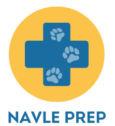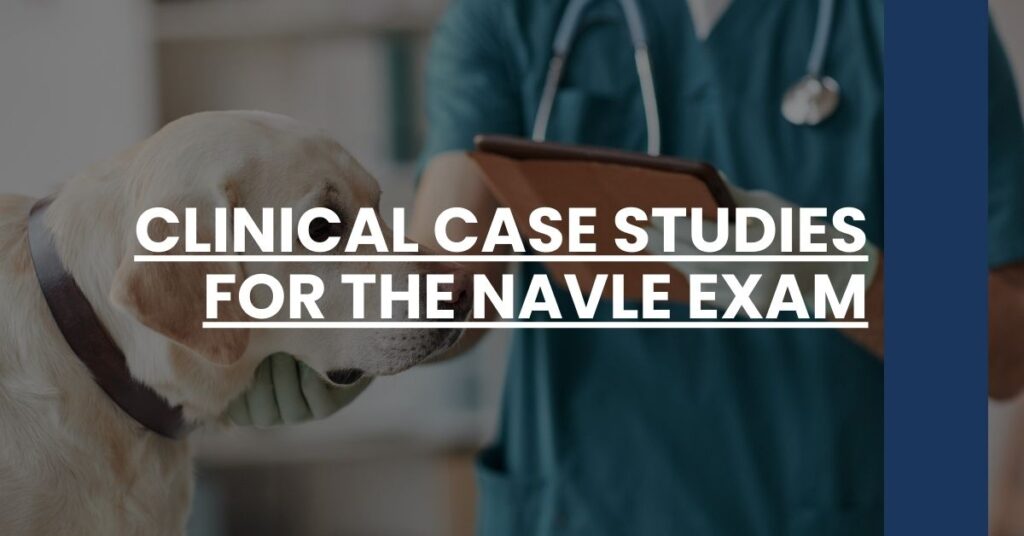Master clinical case studies for the NAVLE exam with our tailored strategies to amplify your prep work.
- Targeted Practice: Sharpen your diagnostic skills through scenario-based learning.
- Time Management: Learn how to prioritize cases effectively under exam conditions.
- Confidence Building: Boost your exam-day confidence by mastering complex case studies.
Elevate your performance on clinical case studies for the NAVLE exam.
- Understanding the NAVLE Exam
- Importance of Clinical Case Studies in NAVLE Preparation
- Types of Clinical Case Studies in the NAVLE
- Effective Strategies for Studying Clinical Case Studies
- Analyzing a Sample Clinical Case Study
- Common Challenges and How to Overcome Them
- Leveraging Practice Exams and Simulations
- Time Management During the Case Study Section
- Additional Resources for Clinical Case Study Preparation
- Conclusion: Clinching Your NAVLE Success
Understanding the NAVLE Exam
The North American Veterinary Licensing Examination, or NAVLE, is the gateway to becoming a licensed veterinarian in North America. Think of it as your final boss in the video game of veterinary school, only it’s real life, and the stakes are as high as your entire career. This exam is comprehensive, testing your knowledge and aptitude across an array of topics in veterinary medicine. Fundamentals are tested, but where you truly shine is in the clinical case studies. It’s these practical scenarios that stretch beyond rote memorization, demanding your analysis, diagnosis, and decision-making skills. Your journey to becoming a trusted veterinarian hinges on your ability to combine theoretical know-how with practical application — exactly what the NAVLE clinical case studies are designed to assess.
NAVLE’s Structure
Getting into the nitty-gritty, the exam is a behemoth with 300 scored items, presented as multiple-choice questions, many woven into real-life veterinary scenarios. It takes place over two testing windows annually, each serving as a critical step in your path to licensure. The clinical case studies therein are robust, including various scenarios, species, and requiring interpretation of diagnostic images. It’s where textbook learning comes to life.
Importance of Clinical Case Studies in NAVLE Preparation
When preparing for the NAVLE, you’ll soon realize that clinical case studies are the MVPs of practical application. These aren’t just hypothetical situations; these are the challenges you will encounter in your daily practice. Do you remember all those group projects and case discussions in veterinary school? That was all prep for this moment. Excelling in clinical case studies during your exam represents your readiness to address complex, unpredictable situations head-on.
Real-World Reflection
Clinical case studies in the NAVLE mirror the unpredictability of veterinary practice. They test your ability to extract pertinent information quickly, to deduce, hypothesize, diagnose, and devise treatment strategies. It’s akin to a pilot using a flight simulator; there’s no better preparation for soaring than practicing with conditions simulated to feel like the real deal.
Types of Clinical Case Studies in the NAVLE
As a would-be veterinarian, your expertise must span a multitude of scenarios. The NAVLE doesn’t shy away from this reality. You can expect case studies involving anything from common companion animals to exotic livestock. You’ll be analyzing conditions ranging from diabetes in a Tabby cat to bovine respiratory disease complex, each accompanied by vivid images or pathology slides.
Species-Specific Scenarios
When it comes to the breadth of species covered, the sample questions from the NAVLE give a glimpse into the depth of knowledge required. You might be working through a case involving a dog with heartworm the one minute, and the next, diagnosing a horse with laminitis. This variety ensures you’re well-rounded and prepared for the diverse cases you’ll surely face in practice.
Conditions Covered
Case studies will cover infectious diseases, chronic conditions, emergency situations, and more. They might involve interpreting radiographs or lab results, recognizing clinical signs, and making decisions based on limited information. Each case is designed to push you, to test your critical thinking, and challenge your clinical knowledge.
Effective Strategies for Studying Clinical Case Studies
Now that you know why clinical case studies are crucial and what they entail, you’re likely wondering how best to study them. Fear not — strategies abound, and integrating them into your study regime can make all the difference.
Smart Study Schedules
Establishing a study schedule and sticking to it is paramount. It’s about quality, not just quantity. Dedicate times when you are most alert to tackle complex cases and routine study sessions for repetitive learning. Crafting a timetable prevents burnout and balances life and studies.
Active Learning Techniques: Engage with the material. Quiz yourself, create mnemonics, and discuss cases with peers. Active learning helps transfer information from short-term to long-term memory, making recall in high-stress situations (like exam day) more apt to happen.
Valuable Resources
You don’t have to go it alone. Utilize reputable resources advised by experts on University of Pennsylvania’s NAVLE Prep guide, including authoritative textbooks if you’re more traditional in your approach, or comprehensive review platforms if digital is your preference. Each resource is a piece of the puzzle in your robust preparation strategy.
Analyzing a Sample Clinical Case Study
Experience is the best teacher, so let’s walk through a sample clinical case study. Here’s a simplified version:
Patient: Daisy, an 8-year-old spayed female Beagle. History: Presented with a two-day history of lethargy, vomiting, and anorexia. Clinical signs: Daisy is dehydrated, with abdominal pain upon palpation. Diagnostics: Bloodwork shows elevated liver enzymes, and an abdominal ultrasound suggests a possible obstruction.
Dissecting the Case
- Patient Signalment: Note Daisy’s age, breed, and spayed status — these inform breed-specific conditions and rule out reproductive issues.
- History and Clinical Signs: A two-day history of these symptoms plus physical exam findings helps formulate your differential diagnoses.
- Diagnostic Findings: Elevated liver enzymes combined with the ultrasound point you toward potential causes.
Establishing a Plan
Now, consider your approach. What are the differential diagnoses? What further tests would you carry out? What are your immediate treatment plans while awaiting more diagnostics? This critical thinking mirrors what clinical case studies in the NAVLE demand.
As you practice with these case studies, you become adept at handling the twists and turns of veterinary medicine. The more diverse the cases you study, the more prepared you’ll be. By analyzing clinical case studies methodically, you cultivate the informed intuition that’s critical for both the NAVLE and your future career.
Common Challenges and How to Overcome Them
Studying for the NAVLE, particularly the clinical case studies section, isn’t without hurdles. But knowing these common obstacles and strategies for triumph is half the battle.
Time Management
- Organize Your Study Blocks: Break down your study time into focused sessions with specific goals to enhance efficiency.
- Prioritize High-Yield Topics: Recognize which subjects appear most frequently and ensure you’re well versed in those areas first.
Information Overload
- Chunking Method: Divide the vast information into smaller, digestible segments that make learning more manageable.
- Use of Mnemonics: Employ mnemonic devices to remember critical information that must be recalled quickly during the exam.
Application of Knowledge
- Practice-Based Learning: Regularly engage with interactive case studies, and not just textbook examples, to sharpen your real-world application skills.
- Peer Discussion: Discuss case studies in study groups or forums to expose yourself to different perspectives and reasoning strategies.
These strategies are all about transforming challenges into stepping stones for success. By systematically addressing these common pitfalls, you can ensure your study sessions are as productive as possible.
Leveraging Practice Exams and Simulations
Practice exams aren’t just a test of your knowledge—they’re an essential tool for understanding the structure and pace of the NAVLE, especially when it comes to handling clinical case studies effectively.
Make It Routine
- Scheduled Sessions: Incorporate practice exams regularly into your study plan to track your progress and adapt your strategies.
- Review and Reflect: It’s not just about getting questions right. Analyze your wrong answers to understand your thought process and improve.
Simulate Real Exam Conditions
- Time Yourself: Use timers to mimic the exam environment and improve your speed and poise under pressure.
- Variety of Material: Use a wide range of practice materials to cover all the bases of potential clinical case studies you might encounter.
Practicing under these conditions will make the actual NAVLE clinical case studies feel more familiar, allowing you to approach them with increased confidence.
Time Management During the Case Study Section
Navigating the NAVLE is a marathon, not a sprint, and nowhere is this more apparent than in the clinical case studies section. Here’s how you manage your precious minutes:
- First Read Through: Quickly scan the case to identify the main complaint and gather vital details.
- Develop a Systematic Approach: Have a mental checklist ready for working through cases to avoid wasting time on indecision.
These strategies help ensure you won’t run out of time and can give each clinical case study the attention it deserves. Maintaining an even pace will leave you best positioned to perform well across the board.
Additional Resources for Clinical Case Study Preparation
A wealth of resources awaits to bolster your study for the NAVLE clinical case studies, but it’s essential to choose wisely to maximize their benefit.
Recommended Reads
- Essential Textbooks: Books such as Mosby’s Review Questions & Answers for Veterinary Boards can provide a wealth of relevant scenarios.
- Online Question Banks: Digital platforms offer a wide array of practice case studies, allowing for interactive and immediate feedback.
Collaborative Tools
- Study Groups: Engage with peers to challenge one another and gain different perspectives on clinical case strategies.
- Flashcards: Use tools like Anki or Quizlet for rapid-fire reviewing of crucial facts pivotal to case studies.
Each of these resources can add an edge to your studies, making them more dynamic, interactive, and ultimately more reflective of the NAVLE exam experience.
Conclusion: Clinching Your NAVLE Success
Success in the NAVLE, particularly the clinical case studies, is within your reach. It demands a dedicated blend of knowledge acquisition, practical application, and savvy test-taking skills. Keep in mind:
- Understanding Trumps Memorization: Strive to deeply understand conditions and treatments rather than relying on rote memory alone.
- Practice is Paramount: Apply what you’ve learned frequently and in diverse ways; this will prepare you for the unexpected.
- Stay Positive and Focused: The right mindset can empower you through the most challenging study sessions and the high-pressure exam environment.
Remember, every clinical case study you conquer in your preparation brings you a step closer to demonstrating the competent, composed veterinarian you’re set to become.engage* your skills, _sharpen your knowledge and _embrace the journey toward clinching your NAVLE success.
Clinical case studies for the NAVLE exam: Master strategies to ace clinical scenarios with this ultimate preparation guide.

